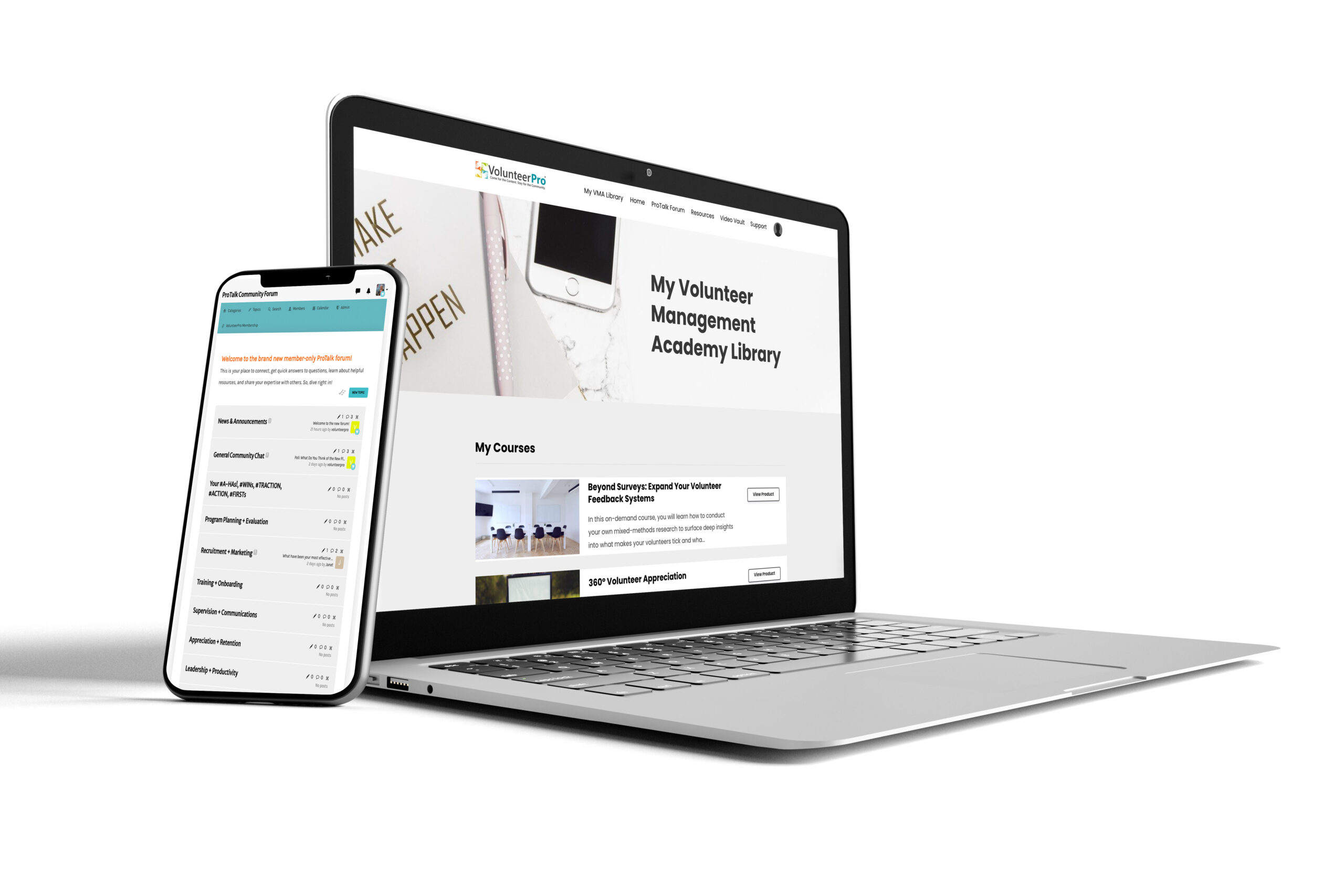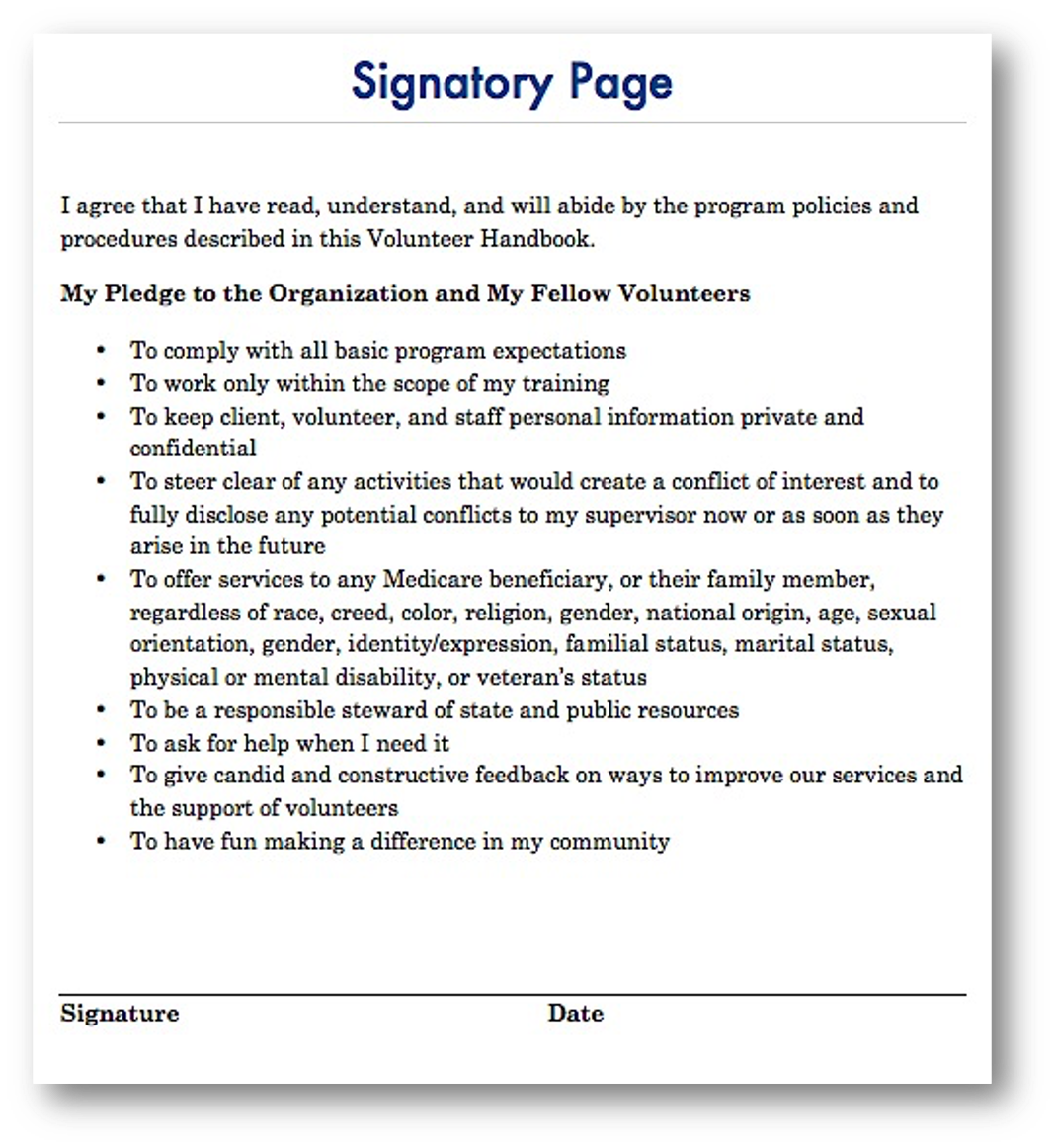
How to Recruit and Retain Volunteers, Even When You’re Uncertain of Success
In today’s world, many nonprofits are unsure about how to recruit and retain volunteers. For many, tactics that have proven successful in the past simply aren’t working anymore. They fear that attracting dedicated volunteers is a lost cause, especially during a pandemic.
But, it isn’t.
In order to skillfully recruit and retain great volunteers requires thoughtful planning and strategy. Deliberate actions are necessary, but when you are building a new or floundering team, it may feel awkward or even forced.
Are people really interested in helping our kind of work? Do I sound desperate, like I’m begging? What if I get rejected and I’m never able to grow the team we need?
These are all common doubts and fears.
And they are all speed bumps that you can overcome as you learn how to recruit and retain volunteers more effectively. The fact is, that although we often think of leadership as an inherited quality, and that natural leaders are born to attract followers, the reality is that it’s more often the sum of many learned skills.
By the same token, the ability to recruit and retain volunteer teams is not something you should expect to whip up overnight like some kind of dessert. As your skills as a leader grow, so will the capacity of your volunteer teams.
Define the Partnership. Reinforce the Mission
When you define and communicate how exactly the partnership between your organization and the community needs to look, you offer interested volunteers something concrete by which they can confirm their volunteerism aspirations.
“Yes, this IS a place where I can feel comfortable, do something personally meaningful, and make a positive impact on the world!” Volunteers who can confidently make this statement will be the foundation of your volunteer teams.
It’s also helpful to be clear just what you are asking volunteers to do.
Without role definitions, you risk giving the impression that the time volunteers invest in your cause has no real direction or purpose. And in most cases, when the volunteer doesn’t feel like what they are doing matters, they won’t stick around long enough for you to convince them otherwise.
The good news is that there is a simple remedy. There are two easy ways volunteer managers can define the roles volunteers fulfill and the return they can expect from the experience: volunteer position descriptions and volunteer agreements.
So, make sure you create documents that are clear, inviting, and inspiring, not simply a list of “thou shalts.” Keep reading to learn more …
How to Recruit and Retain Volunteers for the Perfect Volunteer Team: Two Necessities
You want that superstar team of skilled and committed volunteers right now, right? Fortunately, there are a couple of things you can start now to begin building your rockstar volunteer team.
Both approaches involve defining the roles your volunteers will fulfill within your organization. While it’s important to a volunteer to be doing something meaningful for your mission, what most are really looking for is a partner (you) with whom they can work together to improve the world.
Being clear about expectations upfront can also help volunteers who are on the fence decide whether the opportunity is a good fit for their interests, skills, and availability.
Think quality over quantity. Your goal should be to attract people for which your volunteer roles are a “no brainer.” That your work really matches their key desires.
This sets the stage for greater volunteer retention rates and reduces the revolving door of volunteer turnover that plagues so many organizations.
1. Write a Solid Volunteer Position Description
We have a post on the VolunteerPro blog dedicated to writing the perfect job description, so, we won’t go into detail here. At a glance, you’ll need to include the following in your position description:
· Goals of the Role
· Duties and Responsibilities
· Time Requirements
· Location
· Work Environment
· Skills & Qualifications
· Orientation & Training
· Supervision & Support
· How to Apply
· You can also include these bonuses that will really make your offer sing:
· The Benefits Volunteers Will Receive
· Testimonials
· Team Values
· The Impact of the Role
2. Use Volunteer Agreements
Depending on you and your organizational culture, a volunteer expectation document may be a better fit than a full position description. Or, in some cases, an expectations dialogue deepens the position description by giving the volunteer some say in how they will interact with your organizational staff and volunteer teams.
Remember your volunteers are looking for a place they can work to make a positive impact. If you can add volunteer agreements to the onboarding process, you’ll create a sense of shared power and a stake in the process. This makes it more likely that your volunteer will be able to definitively say they feel connected and sure about the work you’re doing together.
Sample Volunteer Agreement for Building Volunteer Teams
Here’s an example of a simple volunteer agreement that was included at the backs of a volunteer handbook as the signatory page. These can be used this way or as standalone document. Note how simple and to the point these can be.
To begin building volunteer teams, you must start by attracting and retaining the right kind of individuals. By clearly defining and communicating the roles and expectations you have for your volunteers, you help put them at ease as they acclimate to your organization. Further, you signal right up front who is a fit for your organization so that more of the volunteers who you want and need on your volunteer teams step up.
How to Recruit and Retain Volunteers: Write Powerful, Targeted Volunteer Recruitment Ads
Once you have your foundational expectations for volunteers memorialized in a position description, volunteer agreements, or both, it’s time to shift gears and start thinking about how you will make your appeal for support and what you will say.
Again, setting expectations upfront, along with a compelling offer can set the stage for better volunteer retention, too.
Many moons ago, when I was a high school junior, my English Composition teacher required us to include four points at the top of every paper we submitted. They were name, date, purpose, audience. Even then, I was being prepared to write volunteer recruitment ads.
By that age, I was well-accustomed to the name/date pattern, but purpose and audience were curious to me. Studious (read: nerdy) person that I was, I followed the directive and over time, it became a part of my writing psyche. Little did I know, while I was toiling away with hand-written (cursive, pencil, double-spaced) five-paragraph essays, I was learning the perspectives that would be foundational to getting people to see and pay attention to the words I put out.
These two points are still mentally at the top of every blog I write, every social post I make, and every ad I design. They force me to pause and take stock of what I’m doing and help guide me away from common pitfalls in marketing.
If you’re trying to figure out how to get started with volunteer recruitment ads, defining your purpose and target audience will help you write the attention-grabbing copy you seek.
No shouting into the vast undefined space of the internet. No more calls of desperation that undermine your credibility. Just volunteer recruitment ads that inspire action from the right people.
Define Your Purpose
Ideally, all your outreach will have a starting point in your strategic plan and an endpoint with the volunteer recruitment ads you write.
Strategic Plan –> Strategic Volunteer Plan –> Volunteer Marketing Plan –> Your Volunteer Recruitment Ads
Example:
Strategic Plan Goal – Increase corporate support (foundation, marketing, volunteers).
Strategic Volunteer Plan Goal – Engage [certain percentage] more corporate volunteers with companies that offer employer-sponsored volunteerism.
Volunteer Marketing Plan – Run mid-summer corporate volunteer campaign targeting employers with sponsored volunteerism.
Your Volunteer Recruitment Ad – One day away from your desk can preserve a decade of our local history.
If you’re fortunate enough to have this level of thinking already applied to your work, the purpose of your ad will be derived straight from it. If you do not have all or any of these plans, you may need to back up and think about the goals you’re trying to achieve first.
Start with Your Mission
Figuring out your purpose for volunteer recruitment ads is much easier than you think. Simply start with your nonprofit’s mission. The purpose of everything you put out should have some connection to that mission. Ultimately, that is the purpose of what you’re trying to carry out.
Next, go to the goals of your program or campaign. Do you need to let people know you’re taking new volunteers? Does your outreach need to shed light on the outcomes of your organization’s work? Maybe it needs to inspire potential volunteers.
Whatever the goals of your program, remember this: the purpose of your outreach is rarely solely about getting a certain number of people to show up. The purpose, in the nonprofit world, is always mission-driven. It should be about a consistent education process about why there is a need for your work at all, and your messaging will be served by putting this first. Always.
Candidly, your goal may very well be to get 35 volunteers by next week. The reason you need to think beyond that internal/organizational goal is that your potential volunteers certainly won’t be motivated by that goal.
After all, you aren’t asking 35 people to show up just to stand around. You need them to do something.
What is it they will be doing? What impact will it make? What stories will you/they be able to tell? THOSE are the answers to your question on purpose.
It’s not “HEY WE NEED 5 PEOPLE TO HELP!” It’s “Friend, your time will make an impact on this cause we both care about.”
Targeting Your Audience
Considering the audience of your volunteer recruitment ad is not about completing high-level segment definitions. It’s about considering them as real human beings who have limited time and attention, just like you. It’s about respecting and attempting to understand the needs, motivations, and barriers your audience might experience.
You need to pause and consider these things because you obviously already think your message is great. You’re sold! You love your organization, and everyone (EVERYONE) should be as involved and passionate as you! This passion vortex is hard to escape and makes it difficult to remember that not everyone will share your passion.
And that’s ok! Your goal isn’t to bring in everyone. It’s to bring in others who share a similar type of passion, or, at the very least, a budding curiosity about your mission. These will be the volunteers who are most likely to stick.
That means there are two things your audience is NOT…
1) It’s not you.
2) And it’s not everyone.
Who does that leave? That’s where you need to do some digging.
How to Start Defining Your Target Audience for Volunteer Recruitment
You might start with “people who work at XYZ company that sponsors three corporate volunteer days a year.” That may be good enough, but I challenge you to go a little further.
Just because a person has those days doesn’t mean
a) they are going to use them and
b) if they are going to use them, they want to do so with your organization.
That draws your audience numbers down a little further, but don’t let the smaller potential number freak you out. The closer you get to your audience, the better you can market specifically to them and the more likely they are to pay attention and do what you need.
In the example above, you could settle on something like “my audience for this campaign is people who work at XYZ, want to use their company volunteer days, and are either interested in our local history mission or are looking for a new place to engage.”
At that point, it’s OK that not everyone cares as much as you do about preserving our local history because you’re only trying to reach the people who share that interest. Defining your audience manifests into freedom to speak specifically about what you do and do well, rather than keeping to generalities.
When you try to reach everyone, you end up reaching no one. Your messaging simply becomes too diluted.
Once you commit to your audience, you can work really hard to connect with them. Write to them like they are real people, not a class of people on paper. Think about where they are likely to be hanging out and see your ad and what’s likely to get their attention. Reflect on what they care about how those things connect with your mission.
Why Purpose and Audience Matter in Volunteer Recruitment Ads
Without purpose, our ads confuse potential volunteers with mixed messages and unclear calls to action. When we forget that we are speaking to an audience, the human element is missing from our ads.
Putting the purpose and audience at the top of the page sets the tone for a strategic message that leaves an intentional call to action with your potential volunteer. It also results in volunteer recruitment ads that resonate with your audience because you recognize their values.
And, when people feel seen and heard, they are more likely to lean in and stay.
Do You Make This Mistake When Recruiting and Retaining Volunteers?
When it comes to recruiting and retaining volunteers, your first instinct for messaging might not the best one. In fact, it might just shoot you in the foot.
When you are in deep need of volunteers and have not achieved full capacity, it may seem that painting a complete (and even scary) picture of your needs and vacancies might engender more sympathy and more response.
But research shows the contrary. In fact, desperate pleas for help from an understaffed volunteer team may cast doubts in your audience as to whether the program is worth supporting. In your audience’s mind, if others aren’t volunteering for you, there must be a good reason.
Social Norms Theory
Social Norms Theory suggests that human behavior is influenced by perceptions of how our peers think and act. Moreover, we are more likely to be influenced by
perceived norms (what we view as typical or standard in a group) rather than on the actual norm (the real beliefs and actions of a group).
Here’s an example of how social norms can drive both positive and negative behavior in the environment.
Social Norms in Action
To help reduce the theft of petrified wood artifacts in Arizona’s Petrified Forest National Park, psychologists Robert Cialdini, Steve Martin, and Noah Goldstein designed an ingenious study.
The Petrified Forest had long suffered from theft and had used this message: “Your heritage is being vandalized every day by theft losses of petrified wood of 14 tons a year, mostly a small piece at a time” in an attempt to curb theft. It wasn’t working.
The Test
So, researchers tested the effects of alternate warning signs and included a zone with no sign to control for effects. They placed petrified wood in designated locations. At the end of each time block, they counted and replaced the removed wood pieces, changed the sign, and began again over a 5-week timeframe.
The two signs read:
“Many past visitors have removed petrified wood from the Park, changing the natural state of the Petrified Forest.” This text was accompanied by pictures of three people taking wood.
“Please don’t remove the petrified wood from the Park, in order to preserve the natural state of the Petrified Forest.” This text was accompanied by a picture of a lone visitor stealing a piece of wood, with a red circle-and-bar symbol superimposed over his hand.
The Results
The results were significant. The first message, where a negative norm is described with a group involved, resulted in a 7.92% theft rate. The second message, with a
more neutral norm and only one person involved, resulted in a 1.67% theft rate. The control (no sign) resulted in a 2.9% rate (3% with the former signage).
Cialdini concluded that “It is a serious error to focus an audience on the descriptive norm (i.e., what is done in those situations). Instead, public service messages should focus the audience on the injunctive norm (i.e., what is approved or disapproved in those situations).”
Later, Cialdini repeated the study with four different signs and a control. Similarly, he and his team surmised it is better to use positively-worded messages that show many people complying.
He says to influence an audience “by conveying to recipients that the desired activity is widely performed and roundly approved, whereas the unwanted activity is relatively rare and roundly disapproved.”
Using Social Norms for Recruiting and Retaining Volunteers
Imagine how the phenomenon above might be harnessed for successfully recruiting and retaining volunteers.
When volunteer recruitment is an issue, and insufficient numbers of supporters have joined an organization, volunteer testimonials about positive experiences communicate an injunctive, or moralistic, norm. It basically comes across as finger-wagging, and who wants that?
When recruiting and retaining volunteers, nonprofit marketers must be careful about the perceived social norms they are promoting. Are you promoting the message that no one supports you right now? Or are you promoting that supporting you is good for the community (and people are stepping up to the plate)?
When you feel the urge to engage in “any warm body” recruiting through guilt tactics, pause and think whether it will really serve you. Even if you can recruit a group of people, how long with they really stay?
Your message may make all of the difference in the world.
Start Recruiting and Building Your Volunteer Team Today!
If you have only 1 volunteer or 1,000, if you see your volunteers face-to-face every day or they work in far-flung virtual teams: you can start building your volunteer corps by defining and communicating a compelling vision for success, your goals for how to achieve success, and exactly what volunteers can do with you to make an impact on the world.
Whether it’s about position expectations or other methods, communicating with volunteers is how we build connections with them. This can be especially challenging if you don’t have the opportunity to see your volunteers face-to-face very often (if ever).
Regardless, you can build and sustain the trust of your most important supporters by communicating regularly and authentically, even online. What’s more, there are low-cost and easy-to-use software solutions out there to get and stay connected. Why not use them to your advantage?
Yes, you can change the outcomes of your volunteer recruitment and retention efforts. Overcoming your doubts and taking action is your first step.
Want to Learn More About Retaining Volunteer Talent?
Volunteer retention is all about keeping your folks engaged.
Enjoying deep volunteer engagement and commitment isn’t magic! It takes a smart strategy.
VolunteerPro has a FREE mini-course in our Volunteer Management Academy library that explains what it takes to be an “architect of experience” and realize success for your volunteer team. In this short lesson, I share how to harness the science of trust for better supervision and deepen connections with volunteers through purposeful strategy.
FREE Mini Course – The Art & Science of Volunteer Accountability
Harness the science of trust for better more effective supervision and deeper connections with volunteers.
What you’ll get:
- Expert on-demand video instruction (42-minutes)
- [Worksheet] The Miracle Mindset
- [Cheat Sheet] Five Common Myths & Mindsets About Volunteers










Leave A Comment